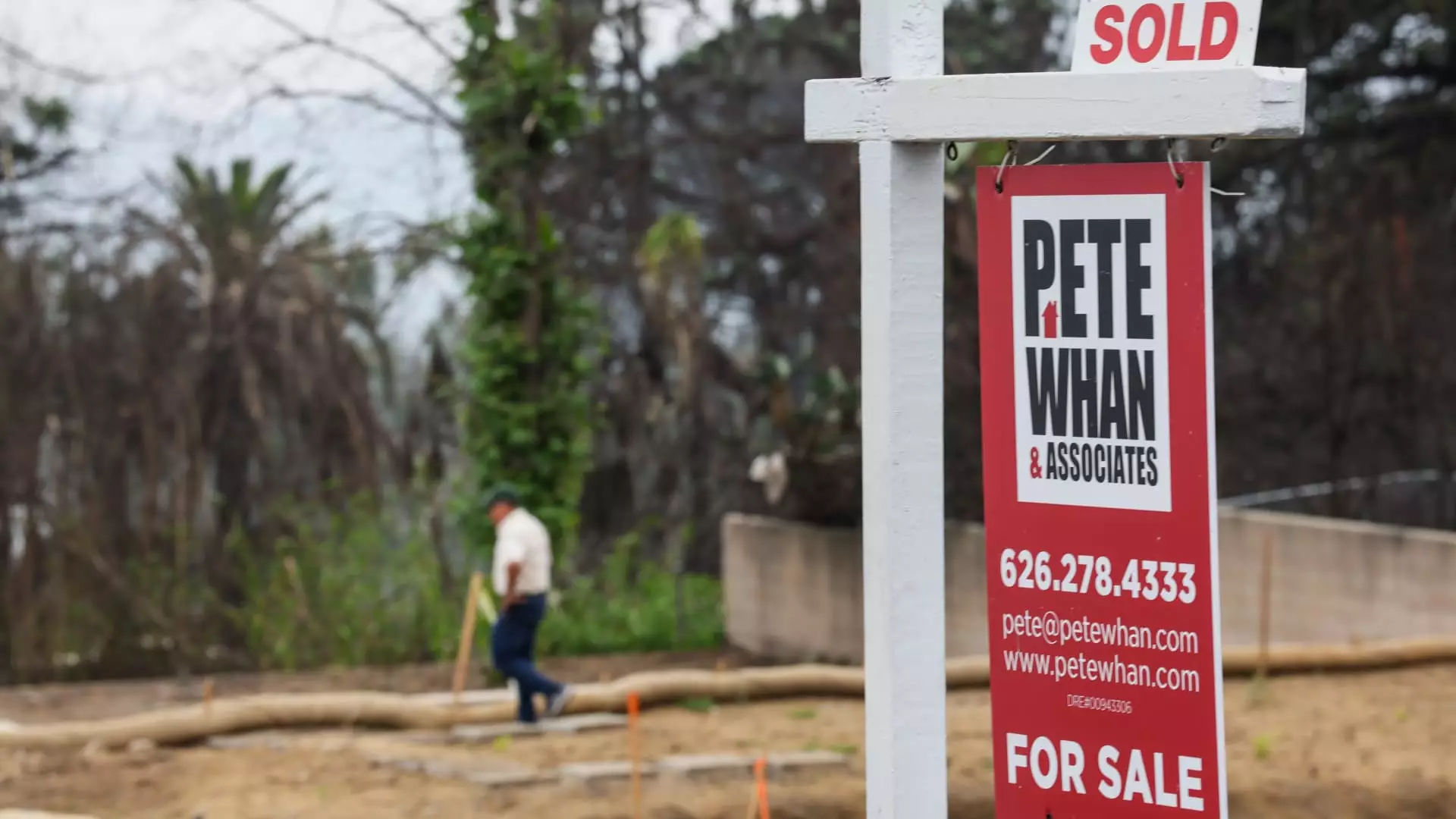Recent financial developments paint a troubling picture of an economy teetering on the edge of instability. The surge in Treasury yields signals a growing distrust among investors about the stability of the nation’s economic future. This uptick, fueled by renewed fears over trade tariffs and their potential long-term impacts, has directly contributed to the sharp increase in mortgage rates. For ordinary Americans, this escalation is more than just a number—it’s a barrier that could lock many out of homeownership, a core pillar of economic security. As mortgage rates hit 6.82%, up from 6.77%, borrowing costs soar, suffocating a market already grappling with diminished enthusiasm.
This shift isn’t merely a statistical blip but a symptom of deeper economic anxieties. The decline in mortgage applications—down 10% from the week prior—demonstrates widespread hesitancy. The housing market, often considered a bellwether of economic health, is showing signs of strain. As potential buyers retreat in the face of rising costs, inventory continues to swell, yet sellers are increasingly reluctant to list properties amidst falling demand. This paradox highlights an unsettling disconnect: increased supply and yet less buyer activity. The consequences threaten to create a feedback loop of stagnation, where housing prices soften further, eroding wealth and consumer confidence.
Trade Tensions and Rising Rates: A Toxic Cocktail
The core issue driving these shifts is the stubborn persistence of trade war tensions. Despite intermittent drops during the week, Treasury yields firmed up, reflecting renewed investor concern regarding tariffs’ damage to economic growth. This environment casts a long shadow over the housing sector, where mortgage rates are intricately linked to Treasury yields; any rise directly dampens borrowing activity. The impact is not isolated but part of a broader economic pattern where trade disputes undermine business investment, employment, and consumer spending.
A particularly troubling aspect is the divergence between the lower rates for jumbo loans and the higher conventional mortgage rates. This anomaly suggests that financial institutions might be gearing up for a future where balance sheet lending becomes more prominent—another sign of the underlying fragility. Such tactics could be temporary measures, but they also point toward a looming economic adjustment that investors and policymakers can no longer dismiss. These subtle shifts reveal an underlying nervousness, one that threatens to spill over into broader economic destabilization.
Refinancing Decline and the Eroding American Dream
The decline in refinancing activity underscores a harsh reality: higher rates are pushing many Americans out of reach of affordable homeownership. A 25% year-over-year increase in refinance applications offers some perspective, yet the weekly decline signals more significant trouble. This decline is not driven solely by financial calculations but by a growing perception of economic precarity. When people see mortgage costs rising, they become cautious, often delaying their plans or abandoning them altogether.
The long-term implications of this trend are profound. When access to affordable credit diminishes, wealth accumulation slows, and social mobility becomes harder to achieve. The American Dream of homeownership, long heralded as a milestone of success, faces new hurdles. This predicament raises critical questions about the societal values we uphold and the policies that could either mitigate or exacerbate such economic hardships. When the foundations of the housing market shake, the broader economy inevitably follows, jeopardizing stability and social cohesion.
The Broader Economic Outlook: Is a Storm Brewing?
Despite a slightly hotter-than-expected inflation report, mortgage rates continue their upward march. This persistence suggests that underlying structural issues—trade disputes, inflation pressures, and policy responses—are not going away. The subtle signals from mortgage markets indicate a potential turning point: if rates keep climbing, the subsequent decline in home sales and refinancing could deepen, triggering a contraction that extends beyond real estate into the broader economy.
The policymaker’s dilemma is stark. While some may view the rise in yields and mortgage rates as a natural correction, they could also herald a more profound slowdown if left unaddressed. At this juncture, it’s worth questioning whether current policies adequately consider the socio-economic fallout or simply serve to appease financial markets temporarily. Without targeted interventions, the decline in homeownership accessibility could become a wedge that wedges further inequality in this nation, undermining the very fabric of a resilient, fair, and dynamic economy.

